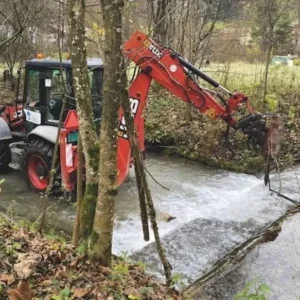
NS Energy profiles the world’s top five biggest diamond mines based on their production in 2018:
Orapa mine – 14.8mtpa
Orapa mine, which commenced production in 1971, is considered as the largest open-pit diamond mine in the world.
The mine is located in eastern Botswana, 240km west of Francistown which is the centre of southern Africa’s first gold rush.
Employing more than 2,800 full-time employees and 237 on fixed-term contracts, the mine is operated by Debswana, a 50-50 joint venture between the government of Botswana and the South African diamond company De Beers.
The current mining depth at Orapa mine is 250m, and is expected to reach 450m by 2026. The mine is licensed to operate until 2033.
Covering an area of 118km² at the surface, the mine is one of the world’s largest kimberlite pipes.
Ore at the Orapa mine is process at a processing plant, which also handles the ore at two other Debswana mines, Letlhakane and Damtshaa.

Catoca diamond mine – 12.4mtpa
Located near Saurimo in the Lunda Sul province of Angola, the Catoca diamond mine is an open-pit mine that has an expected mining life of 30 years and is scheduled to be closed in 2038.
Owned and operated by a joint venture Angolan mining company, Sociedade Mineira de Catoca, it is one of biggest kimberlite pipes situated in the Lucapa structure in North-eastern Angola.
Sociedade Mineira de Catoca is jointly owned by Angola state-run mining company Endiama with 32.8% stake, Russia-based diamond producer Alrosa with 32.8% interest, China’s Sonagol with 18% stake, and Brazil’s Odebrecht Mining with 16.4% stake.
The Catoca diamond deposit occurs in a kimberlite pipe which comprises volcanogenic-sedimentary rocks. The first processing plant at the mine started operations in 1997 with a processing capacity of 4mtpa.
Jwaneng mine – 9.4mtpa
The Jwaneng Mine, located in the Kgalagadi district in Southern Botswana, is claimed to be richest diamond mine in the world in terms of value. Jwaneng is owned by Debswana Diamond – a 50:50 joint venture between Botswana and Anglo American’s De Beers Group.
Discovered in the Naledi River Valley in 1972, the Jwaneng pipe was brought into full operations about ten years later.
In March 2019, Debswana Diamond launched the $2bn (£1.58bn) Cut-9 project at the open-pit mine, aimed at extending its life to 2035. The Cut-9 project is expected to help in drawing an estimated 53 million carats of rough diamonds from 44 million tons of treated material from the open-pit mine.

Majwe Mining, a joint venture between Thiess and Bothakga Burrow Botswana, was awarded a contract worth around $1.2bn (£950m) to deliver diamond mining services for the Cut-9 project.
In 2018, the joint venture executed the Cut-8 project at the Jwaneng diamond mine. The Cut-8 project increased the depth of the mine by a further 250m to 650m, while extending the life of the mine by an additional seven years to at least 2033.
Yubileynaya Open Pit Mine -7mtpa
The Yubileynaya mine in Russia, owned by the state-owned diamond mining company Alrosa, is currently the fourth biggest diamond mine in the world in terms of production. Also known as Jubilee open-pit mine, Yubileynaya is located in Sakha (Yakutia) Republic, about 12km northwest of Aykhal and nearly 70km from Udachny, in the Russian Far East.
The Yubileynaya diamond mine, which is operated by Alrosa’s Aikhal mining and processing division, was brought into production in 1989, more than 11 years after the Jubilee pipe was discovered. As per the Joint Ore Reserves Committee (JORC) Code, the Jubilee pipe is estimated to hold 70 million carats in reserves.
In terms of area, the Yubileynaya diamond mine is easily among the largest diamond mines in the world. In 2017, diamond output from the Russian diamond mine was 10.16 million carats.
The Yubileynaya diamond mine is expected to remain in production till 2032.
Letseng mine – 6.7mtpa
Located in the landlocked kingdom of Lesotho in Southern Africa, the Letseng Mine is the fifth biggest diamond mine in the world.
The Letseng diamond mine is owned by Gem Diamonds (70%) in partnership with the Government of Lesotho (30%). The open-pit diamond mine, which began production in 2004, is expected to be operated till 2039.
Enclosed in the Maluti Mountains, the Letseng diamond mine is known for producing exceptional Type II diamonds that include 910 carat Lesotho Legend, the 493 carat Letšeng Legacy, the 603 carat Lesotho Promise, and the 550 carat Letšeng Star. The African diamond mine also produced high quality blue and pink diamonds as per Gem Diamonds and is ranked among the top 15 global diamond producers in terms of revenue.

Ore from the Letseng diamond mine is processed from two kimberlite pipes – the Main pipe and the Satellite pipe. The diamond mine employs over 1,500 people in full-time roles.






